People who want to learn – or learn more – about sustainable investing often ask me “Where should I begin?” With a topic as rich as environmental, social, and governance (ESG) investing, I think a better way to approach the question might be “How should I begin?”
Sustainable investing asks that we expand how we think about investing. It asks us to rethink our assumptions, reframe our questions, and explore the powerful connections inherent in ESG considerations.
This reading list, which includes both new books and old favorites, provides great opportunities to explore the “hows” of sustainable investing.
For rethinking
Expectations Investing, Michael Mauboussin and Al Rappaport
Stock prices reflect embedded expectations about the future, and this book helps us to better analyze those expectations. This kind of analysis is even more important in sustainable investing, where we are often focused on opportunities and risks that are not yet fully understood by investors. This brand-new updated edition includes lots of added analysis and wisdom from the past 20 years.
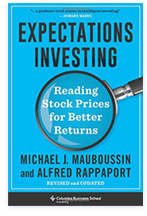
Impact: Reshaping Capitalism to Drive Real Change, Sir Ronald Cohen
In this book, Sir Ronnie highlights the potential for entrepreneurs, governments, investors, and citizens to accelerate positive impact of our work – not as an onerous requirement or luxurious adjunct activity, but at the heart of our endeavors. Given his own history as a venture capital and private equity leader, Cohen has a fluency that moves between system-level analysis and operational-level observation with ease, making the book both aspirational and practical. If you are looking for a clear-eyed view of what is emerging “beyond ESG,” this book is a useful reference.
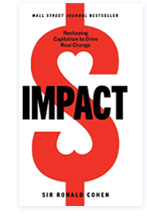
Factfulness, Hans Rosling with Ola Rosling and Anna Rosling Ronnlund
Hans Rosling had a singular talent for bringing data to life, and vice versa. His work shows how a sincere question, backed by rigorous and relevant empirical analysis, can reframe our understanding of current conditions and future possibilities – required qualities for all investors.
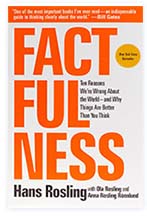
For reframing
Thinking in Systems, Donella Meadows
The promise of sustainable investing is that we might make better decisions by having more complete understanding. Meadows’ genius is to show us how systems are not impermeable static structures, but evolving and analyzable. Her frameworks are essential tools for anyone interested in understanding ecologies, markets, or societies.
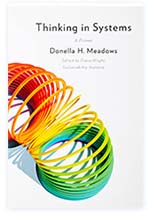
Doughnut Economics, Kate Raworth
It is healthy to question our foundational assumptions – and the tenets of neoclassical economics run deep in our current economic and political systems – with some important benefits and some serious limitations. Raworth helps us to pull them into the light, so they can be properly seen, assessed, and revised.
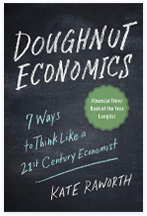
The Wisdom of Finance, Mihir Desai
Written by a professor of both finance and law, this book’s goal is “to humanize finance by bridging the divide between finance and literature, history, philosophy, movies, and religion.” Anyone who can comment on the risk management philosophy of Elizabeth Bennet is automatically one of my favorite people.
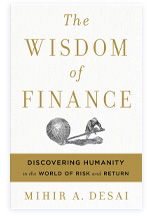
Putnam Sustainable Leaders ETF (PLDR)
Seeks companies that are established leaders in financially material sustainability issues such as reductions in carbon or water intensity and improvements in workplace equality and diversity.
For reconnecting
Braiding Sweetgrass, Robin Wall Kimmerer
“Despite our fears of falling, the gifts of the world stand by to catch us.” Kimmerer’s work reminds us of the deep interconnections between humans and earth, science and spirit, spreadsheets and the living world. This book offers strong roots for any investor who aims to recognizes the value of our planet.

Life on Mars, Tracy K. Smith
Our best poets are able to connect our deepest inner selves to the expanse of the cosmos, illuminating human experience that is both singular and universal. “Eons from even our own moon, we’ll drift / In the haze of space, which will be, once / And for all, scrutable and safe.” Poetry like Smith’s illuminates our fragile and flawed humanity, alongside our immense potential – key ingredients for understanding individuals and institutions alike.
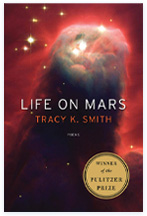
This is Water, David Foster Wallace
This might not seem like an investment book at first glance, but in addition to financial investments, we are investing our own time and energy every day. For all of our decision-making, it’s hard to see the water in which we swim – and essential that we try.
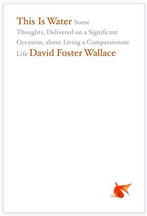
A note on booksellers
Large online retailers provide terrific customer service and helpful product details, for which we are all grateful. We are also loyal patrons of local booksellers. The IndieBound organization can help you find local booksellers and, if you are an e-loving person, they have handy online functions too.

These ETFs are different from traditional ETFs. Traditional ETFs tell the public what assets they hold each day. This ETF will not. This may create additional risks for your investment. For example:
- You may have to pay more money to trade the ETF’s shares. This ETF will provide less information to traders, who tend to charge more for trades when they have less information.
- The price you pay to buy ETF shares on an exchange may not match the value of the ETF’s portfolio. The same is true when you sell shares. These price differences may be greater for this ETF compared to other ETFs because it provides less information to traders.
- These additional risks may be even greater in bad or uncertain market conditions.
- The ETF will publish on its website each day a “Tracking Basket” designed to help trading in shares of the ETF. While the Tracking Basket includes some of the ETF’s holdings, it is not the ETF’s actual portfolio.
The differences between this ETF and other ETFs may also have advantages. By keeping certain information about the ETF secret, this ETF may face less risk that other traders can predict or copy its investment strategy. This may improve the ETF’s performance. If other traders are able to copy or predict the ETF’s investment strategy, however, this may hurt the ETF’s performance.
For additional information regarding the unique attributes and risks of the ETF, see disclosure below and the Principal Investment Risks section of the prospectus.
Shares of any ETF are bought and sold at market price (not NAV), may trade at a discount or premium to NAV and are not individually redeemed from the fund. Brokerage commissions will reduce returns.
The funds have limited public-trading history and will operate differently from other actively managed ETFs that publish their portfolio holdings on a daily basis.
Putnam ETFs are distributed by Foreside Fund Services, LLC. Foreside is not affiliated with Putnam Investments.
328115 11/21
More in: Equity, Exchange-traded funds, Sustainable investing



